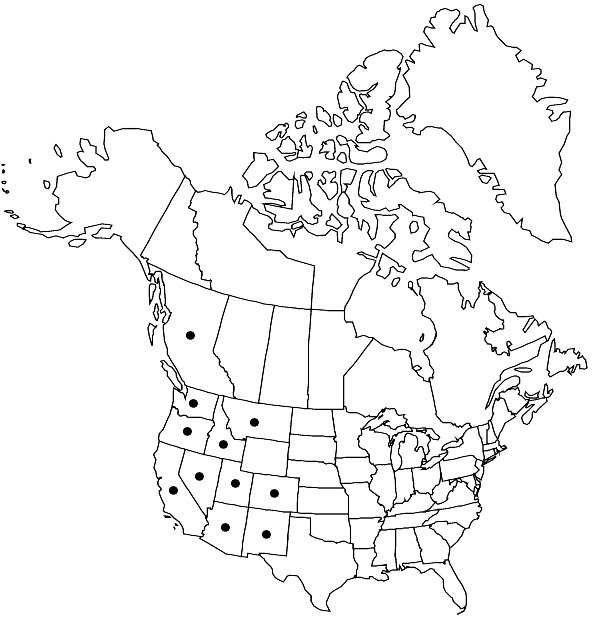Syntrichia papillosissima
Hedwigia 49: 44. 1910,.
Stems 10–25 mm. Leaves clasping at base, infolded and twisted around the stem when dry, squarrose-recurved when moist, lingulate-ovate, 2.5–4 × 1–1.6 mm, canaliculate to keeled; margins tightly revolute in the proximal 3/4–7/8, entire; apices obtuse to acute; costa excurrent into a serrate, hyaline awn that is often brown, sometimes broadly hyaline at base, strongly papillose abaxially and serrate because of projecting cell ends, yellow-brown; basal cells abruptly differentiated, rectangular, 45–90 × 15–23 µm, quadrate to narrowly rectangular at the margins; distal cells quadrate to polygonal, 11–18 µm, with tall, bulging mammillae, bearing 1–2 papillae per cell, thick-walled and sometimes collenchymatous. Specialized asexual reproduction absent. Sexual condition dioicous. Seta brown, 12–18 mm. Capsule brown, 3–5 mm, curved, with an abrupt neck; operculum ca. 2 mm; peristome ca. 1.8 mm, the upper divisions twisted ca. 2 turns, yellow-brown, the basal membrane white, ca. 1/2 the total length. Spores 10–14 µm, papillose.
Habitat: Dry soil, rock
Elevation: moderate to high elevations
Distribution

B.C., Ariz., Calif., Colo., Idaho, Mont., Nev., N.Mex., Oreg., Utah, Wash., Mexico (Coahuila, Nuevo León), s Europe, c Asia.
Discussion
Syntrichia papillosissima is primarily a species of the Great Basin Desert north into the shrub-steppe ecosystems of the Columbia Basin, where it often occurs as a co-dominant with S. ruralis and S. caninervis. It is similar to a robust S. ruralis, differing most conspicuously in the extremely tall mammillae on the distal leaf cells, each crowned by only one or two papillae, unlike the shorter bulging cell surface bearing four or five papillae characterizing other species in the S. ruralis complex. Syntrichia papillosissima also has larger distal laminal cells, which are more pellucid than those of S. ruralis.
Selected References
None.